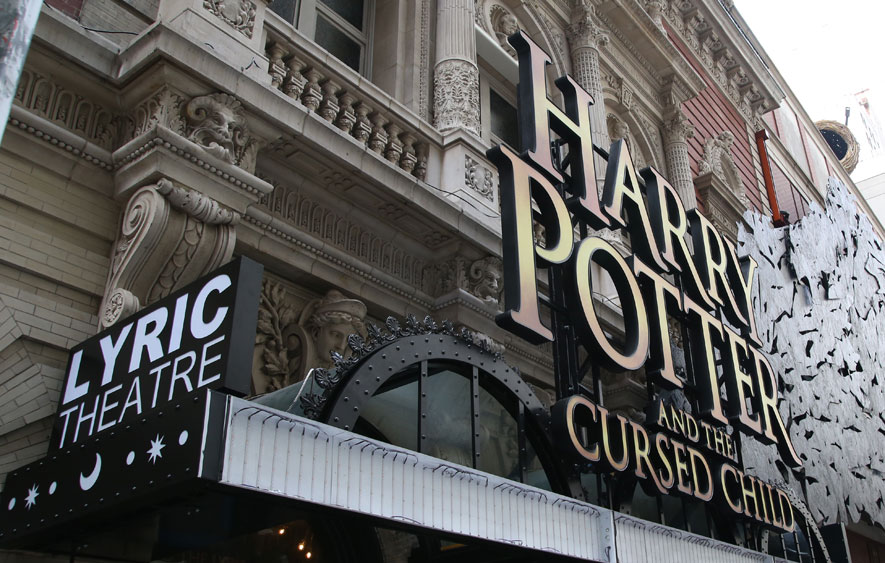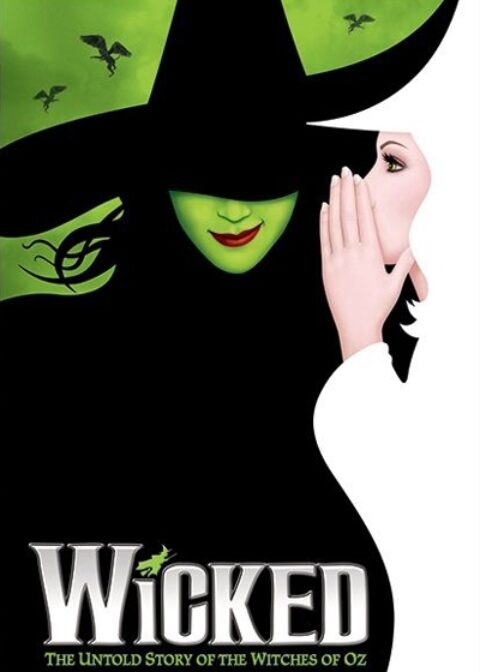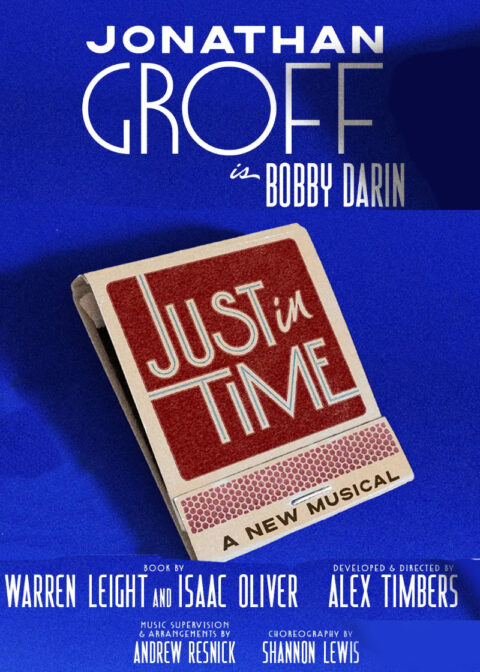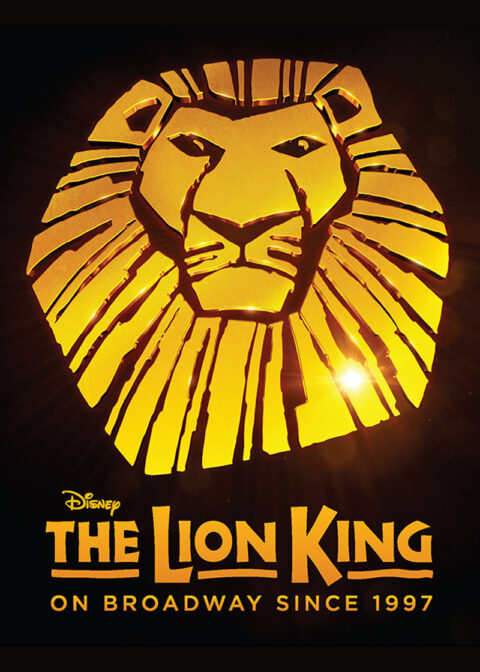Review of Harry Potter and the Cursed Child playing at the Lyric Theatre on Broadway, Starring Jamie Parker, Paul Thornley, Noma Dumezweni, Poppy Miller, Sam Clemmett, Alex Price and Anthony Boyle
Harry Potter and the Cursed Child Review

Harry Potter and the Cursed Child opened on Broadway in previews on March 16, 2018 and has scheduled its red carpet opening for over a month later on April 22, 2018. Potter fans worldwide just couldn’t be happier with a story continuation of the best-selling series of books and movies, now live on the stage. The Broadway show is a London West-End import that was penned by Jack Thorne and John Tiffany. J.K. Rowling gets an honorable mention on the writing for the show, but she did little for this adaptation.
The Cursed Child, after setting record box office sales in London’s West-End, hit Broadway with a bang and expectations are high for this big-budget show that is now residing at the former Spiderman theatre, The Lyric on 43rd Street and Broadway in New York City. This massive Potter production on the Great White Way understandably brought out the Broadway big-guns to guarantee that it has the best shot at success with John Tiffany directing the show, scenic design by Christine Jones and costumes by Katrina Lindsay, to name but a few.
The Story: Wizard Families Threatened by an Old Nemesis
Harry Potter and the Cursed Child is essentially set in a time-slice moment where Harry (Jamie Parker) is now a middle aged man and married to Ginny Weasly (Poppy Miller). They have a moody teenage son, Albus Potter (Sam Clemett) who sets off to Hogwarts to begin his wizardry education. Ron Weasley (Paul Thornley) and Hermione Granger (Noma Dumezweni) are married with children, who now also attend Hogwarts. The Weasly children feature very little in the show plot, with most of the action driven by Albus Potter and his best friend Scorpius (Anthony Boyle), the son of Draco Malfoy.
Both Albus and Scorpius have difficulty in reconciling who they truly are, instead of feeling like poor reflections of their famous wizardly fathers. We discover their inner conflicts, and watch as they struggle to validate their own identities. The parents all have mundane government jobs in the big world of magic, but the evil Voldemort is once again on the prowl and it will the collective effort of these disparate families to defeat the evil of “he who shall not be named”. The Potter gang will need to bury deep-seated grudges and petty disagreements to save their precious and fragile world that the forces of evil can so easily ravage.

Is the Two-Parter Potter Just Too Much Potter?
Harry Potter and The Cursed Child is split into two parts. Although each part runs about two hours and forty minutes, they often feel even longer. Both shows together add up to about 6 hours stuck in the seat in this huge theatre, an endurance challenge that even Spartan racers would be proud of. Audiences are given choices to see the two parts on the same or different days, but favorable ticket sales are given to fans One reason for this bloated story, is that an abundance of scenes suffer from far too much exposition and backstory.
The play-action often gets dragged down by having to give a full briefing on where we are in the Potter story, so non-Potter fans are frustrated by references to other characters and storyline that are not in the show. The story could have delivered the background in a more natural way in the flow of the show, rather than in chunks of irrelevant and pandering dialogue.

Show Casts Noma Dumezweni as Hermione Granger
This show’s casting has broken a significant barrier for the Potter franchise. Harry Potter looks pretty much like a forty-year-old version of Harry Potter from the movie series. Even Ron Weasley looks pretty much like an older Ron Weasley from the previous iterations. The twist in the Harry Potter Broadway show is that Hermione Granger has gone from being a skinny white girl to a statuesque black woman.
Movie fans grew up with the image of Hermione being portrayed by Emma Watson, so they at first find it jarring to see Noma Dumezweni in the role. This may also be a stretch for the avid Potter books’ fans, but Broadway fans will immediately embrace the commanding presence and strength of Dumezweni’s performance. The previous Harry Potter movies and books obviously lacked color in any of the major roles, so it is commendable that they would finally attempt to correct JK Rowling’s original oversight.
#keepthesecrets
The show makes a big point to promote #keepthesecrets, but I am not sure that anyone other than an abiding Potter fan cares about those “secrets”. Throughout the show there are revelations as to who did what and when to whom in the past, that go right over the head of your average Broadway theatregoers’ Potter knowledge. Potter fans seem to swoon at these revelations during the show, with audible gasps when the insights come to light.
Your average theatre goer may not care and will judge the Broadway production on its own merits and they may not want to be part of the Potter insider’s club whom they may already view with some real disdain. With lots of character callbacks to the previous Potter books where seemingly inconsequential characters are now vital to the Broadway show plot, non-Potter people will have no idea why the audience is gasping. Nor will they care.

Dystopian Vision of Hogwarts
Make no mistake about it, the opening scenes of part two of Harry Potter and the Cursed Child reveal an alternative dystopian world of what Hogwarts would look like if it was ruled by Nazis. Everything from the SS death head symbol, unseen Muggles screaming from dungeons, barking line delivery and the black military costumes all shout Third Reich, if not the Schutzstaffel itself.
It also doesn’t help that both Father and Son, Draco Malfoy and Scorpius Malfoy, have the blonde blue-eyed quintessential Aryan look. Fortunately the show doesn’t dwell on this theme for too long as it becomes a little scary for younger fans, but the symbolism is made very clear. Voldemort is clearly a Nazi and in this version of the present, Hogwarts is now a Hitler Youth training camp.
It’s Not Clear Who The Star of the Show Is
Harry gets a small part as the boring, often whiny parent of a sullen adolescent. This storyline, of a parent failing to connect with the struggles of a teen straddling childhood and adulthood is often predictable, if not stereotypical. “You need to see your son,” Ginny advises her husband, but her words fall on deaf ears. Perhaps the writers are trying to connect with the now-adult first generation fans of the franchise who went through their own teenage angst and are now parents themselves. The attempts felt like pandering to the audience. Harry Potter is clearly not the star of the show as the character does not develop along with the storyline in any meaningful way. To further underline this, the writers cast Harry Potter as depressed middle-aged man working at a dead end government job and his role or character never really changes beyond that.
Similarly the show is not really about his son Albus Potter either. Sure, there are some scenes where this character does move forward, but the real star of the show is Scorpius Malfoy. This character drives the plot forward and he gets to own the stage and the best lines in the show, which seems to indicate a big shift in direction for the writers from the books and movies. It’s as if they were writing about Donald Trump as Draco Malfoy and Baron Trump as Scorpius Malfoy, without letting JK Rowling in on the gag. Rowling has made no secret about her vitriol for Trump and this would be the ultimate comeback to write her nemesis into the show.
The Shows Amazing Special Effects Fails to Turn the Tide
The Cursed Child has some great special effects that should be mentioned. People disappear in the phone booth, a messy desk organizes itself and the whole stage wobbles during the time travel scenes all try to provide a dramatic turning point to a disappointing show. These effects are amazing and clearly took many hours of painstaking work to get right. No audience member was disappointed when it came to the magic spells a wand could cast.

Harry Potter and the Cursed Child Review: Conclusion
With its long, drawn out scenes that seem to go nowhere fast and many scenes that seem to be pretty self-indulgent, this show may be in trouble with American audiences. Sure, the British may have sucked the story up with gusto, but I am not sure that Stateside audiences have the palette for such brutal banality. It is true that the Limeys have very different musical theatre tastes. There are over five scenes that could be cut from the show and it could still maintain the storyline, but given the luxury of being a rambling two-part show, it may have made the director lazy in not having to cut superfluous scenes, something a movie writer would be forced to do with their own limited budget.
It is not clear why the show is in two parts, it may be more of a financial strategy than a creative one, making fans pay double for the Harry Potter experience to keep seats filled and investors pockets full of Silver Sickles. With the “Time Turner” device now playing a starring role in the show, the Potter franchise may have just morphed into a Wizardly version of “Back to the Future”Through no fault of its own, Harry Potter and The Cursed Child seems to inherit a lot of its bad karma from other critical and box office failures that played at the Lyric Theater that included Chitty Chitty Bang Bang and Spider-man, both of which left investors massively in the red. Once the show opening hoopla had faded, The Cursed Child may just be a cursed show after all.


